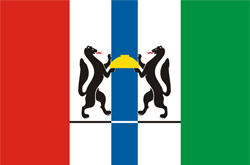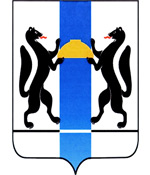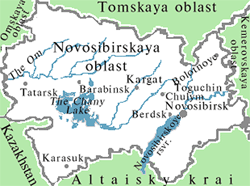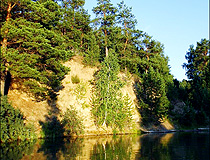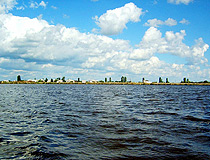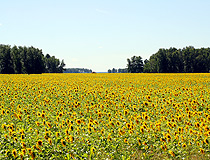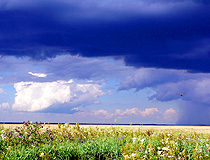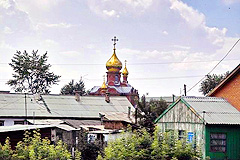Novosibirsk Oblast - Overview
Novosibirsk Oblast is a federal subject of Russia, part of the Siberian Federal District. Novosibirsk is the capital city of the region.
The population of Novosibirsk Oblast is about 2,780,000 (2022), the area - 177,756 sq. km.
History of Novosibirsk Oblast
Over thousands of years, the territory of the Novosibirsk region, due to its location on the border of natural zones and cultural regions (the Siberian taiga and the Eurasian steppe), played the role of a buffer zone or border zone of different peoples.
In the 13th-15th centuries, this land was the eastern outskirts of the Golden Horde. Later, until the end of the 16th century, it was part of the Siberian Khanate. In the 18th century, the territory of the present Novosibirsk region became part of the Russian Empire.
Despite the relatively favorable climate, the Russians began to settle here relatively late. The Barabin Tatars were the indigenous people. Today, their total population is about 10,000 people living mainly in the western parts of the region.
The Barabin Tatars were subjected to constant attacks of the Kalmyks (the Oyrates and Teleuts). Russian villages were also under the threat. That’s why people preferred to settle in the north, near Tomsk. Only at the end of the 17th century, Novosibirsk province became attractive to settlers.
More Historical Facts…
The first settlement was founded by the boyar son Alexey Kruglik in 1695. Later, this settlement became the village of Kruglikovo. Today, it is located in Bolotninsky district. In the early 18th century, Berdsky stockaded town was built. Over time, the threat from the nomads decreased and the number of settlers increased.
In 1722, the Siberian line of fortresses along the Irtysh River was constructed. The locals were mainly engaged in soil tilling, fishing and hunting. In the early 19th century, the famous Ural manufacturer Akinfiy Demidov constructed two copper melting plants here - Kolyvansky and Barnaulsky.
In 1893, due to the construction of the Trans-Siberian Railway and the railway bridge across the Ob River, Alexandrovsky settlement was built (from 1895 - Novonikolayevsky). Thanks to its convenient geographical location (the Trans-Siberian Railway crossing the Ob River, transportation ways connecting Siberia with the European part of the Russian Empire), its trade importance grew rapidly. In 1909, Novonikolayevsk became a town. In 1925, it was renamed in Novosibirsk.
Before 1921, the territory of Novosibirsk oblast was part of Tomsk gubernia, from 1921 to 1925 - of Novonikolayevsk gubernia, from 1925 to 1930 - of Siberian krai, from 1930 to 1937 - of West Siberian krai. September 28, 1937, West Siberian krai was divided into Novosibirsk oblast and Altay krai. This date is considered the official date of the region formation.
Novosibirsk Oblast - Features
Novosibirsk Oblast is located in the south east of the East-Siberian Plain, in the steppe, forest-steppe and taiga zones, between the Ob and the Irtysh rivers. The length of the region from west to east - 642 km, from north to south - 444 km.
The southern part of Vasyugan swamp, the largest swamp in the world, occupies the territory in the north and north-west of the province. In the southwest, it borders with Pavlodar oblast of Kazakhstan.
There are about 3,000 lakes on the territory of the Novosibirsk region. The largest lakes are Chany, Ubinskoye, Sartlan. Novosibirsk Reservoir also known as “the Ob Sea” (1,082 sq. km.) was created for Novosibirsk Hydroelectric Power Plant.
The climate is continental. The average temperature in January ranges from minus 16 degrees Celsius in the south and minus 20 degrees Celsius in the north. The average temperature in July - plus 18-20 degrees Celsius.
The largest cities and towns are Novosibirsk (1,621,000), Berdsk (103,500), Iskitim (54,700), Kuybishev (43,000). Novosibirsk is one the largest industrial, transport, scientific, and cultural center of Russia, the third most populous city in the country after Moscow and St. Petersburg. It is also the capital of the Siberian Federal District.
In the historical part of Novosibirsk you can find a lot of preserved monuments of the Russian Empire times. The Soviet era is presented by numerous scientific and cultural attractions, as well as beautiful parks.
There are more than 500 deposits of various mineral resources in Novosibirsk Oblast (coal, refractory clay, peat, anthracite). Natural gas and oil fields are located in the north-western part of the region. There are significant reserves of underground thermal and mineral waters. Forests cover about 4 million hectares, more than 20% of the territory.
Novosibirsk Oblast is one of the most industrially developed regions in Siberia (metal processing and machine building, food, power engineering, non-ferrous metallurgy industries). Heavy industries are concentrated in Novosibirsk, Iskitim and Berdsk.
The regional agriculture specializes in the cultivation of grain, potatoes and vegetables. Dairy cattle breeding, poultry farming and beekeeping are developed. The production of flax plays an important role too. Agricultural development of the territory is not high (about 48%). In general, it has about 25% of all agricultural land in Western Siberia.


